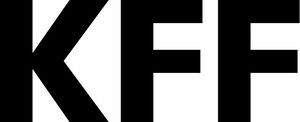
The independent source for health policy research, polling, and news.
Timely insights and analysis from KFF staff
What is happening to USAID?
As has been reported, President Trump and others in his administration would like to dissolve USAID, U.S. agency for international development, shutting it down as an independent agency and putting at least some of its functions within the State Department. They have already taken down the USAID website, let go of hundreds of staff, and closed the USAID building, preventing other staff from accessing it. Additionally, Secretary of State Rubio has been appointed by the President as Acting USAID Administrator and it is likely that budget cuts and other changes to USAID programs will be sought. This is coinciding with several executive orders and other actions issued by the President, most notably one that has served to pause almost all foreign aid programs and initiate a 90-day review period to assess alignment of programs with administration policy, creating chaos and disruption throughout the world.
Secretary Rubio has said that USAID has conflicting, overlapping and duplicative functions, its systems are not well coordinated, and the agency is unresponsive to State. Other officials have claimed that the agency is “overly influenced by left-wing and “woke” politics,” though no evidence has been offered to back this up, and this may be related to the administration’s larger anti-diversity, equity, and inclusion (DEI) efforts and those to remove programs and protections for people who are transgender and mentions of gender identity. At this time, it is not known what changes will be made to the agency that has worked internationally for more than six decades.
USAID was first created by President Kennedy through a 1961 executive order as an agency of the State Department, under the authority of the Foreign Assistance Act of 1961. It has been the world’s premier international development agency, with programs on global health, humanitarian assistance, economic growth, education, agriculture, and other areas for decades. It has also had a complicated history with State. While initially being part of the State Department, the Foreign Affairs Reform and Restructuring Act of 1998 established it as independent agency within the Executive Branch, and allowed for the Executive Branch to decide whether to keep it as such which it did (an excellent overview of the history and legal authorities for USAID is provided by Just Security).
At other times, there have been calls to give more or less authority to USAID or otherwise change it. Notably, in 2003 when President George W. Bush created PEPFAR, the global HIV/AIDS program, he placed it with the State Department, marking a break from how most other U.S. global health programs were carried out (still, the State Department is not an implementer of programs and most of PEPFAR has been implemented by USAID and CDC). The Bush administration also created the Office of the Director of U.S. Foreign Assistance within State to manage both USAID and State funds (removing a similar function from USAID).
During the Obama administration, there was a push in the other direction through the Quadrennial Diplomacy and Development Review (QDDR) which sought to give more authority and support to USAID. Trump, during his first term, made changes to USAID, including some consolidation, while Biden gave the USAID Administrator a seat on the National Security Council. Beyond these ebbs and flows, there is Congress, which authorizes and provides oversight of foreign assistance programs, including annual earmarks for specific programs at USAID. Most recently, in its FY 2024 final appropriations bill, Congress included language requiring prior notification and consultation for any changes to USAID, State, or any other agency carrying out foreign operations.
Putting aside whether the ultimate best location for USAID is within State or not, and which functions should remain where, what is happening now is not what has happened in the past. Prior efforts have been long and often drawn out, typically with the consultation of Congress during the process. Indeed, because USAID was established by Congress as an independent agency, the Executive Branch cannot dissolve or move it, but it can propose internal changes with Congressional notification and consultation. In the current moment, the move to shut down the agency (and pause all foreign assistance) happened without Congressional notification – Congress was not notified until February 3, the same day that several Democratic lawmakers protested the closure of the agency.
At this time, it is not clear what might be left of USAID, or its functions, after the dust settles. This likely means an ongoing and potentially permanent disruption of global health and other services, particularly as a freeze on foreign aid funding remains and 90-day review continues.
The more important question, though, is not whether USAID sits in the State Department or remains independent, but what functions it does and does not perform (and will be kept), and more broadly, as a result, what the United States role in the world is.
